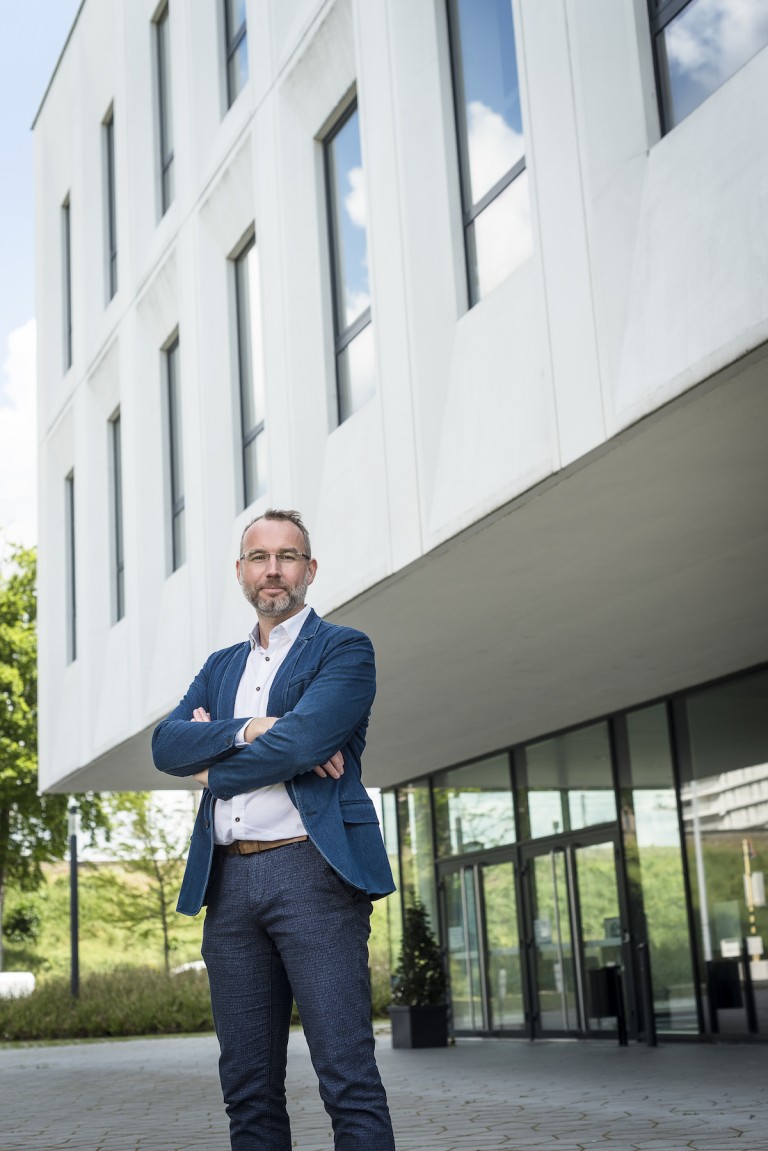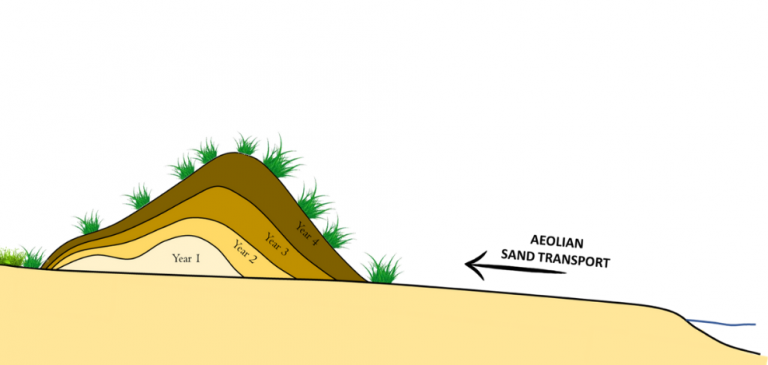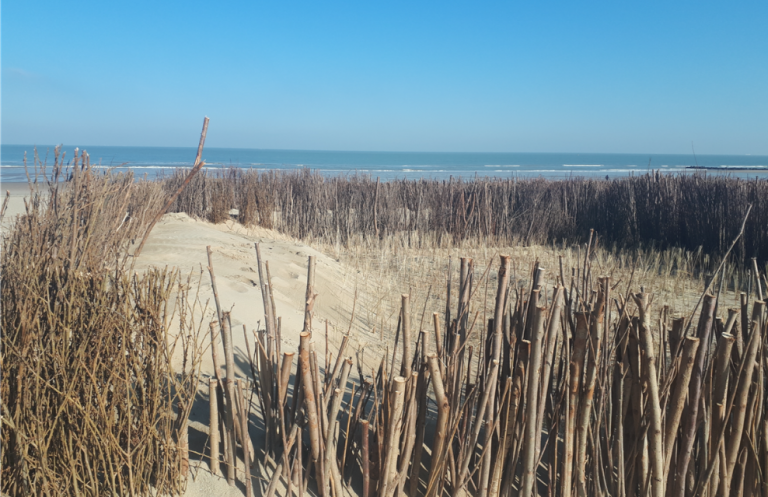How can Aeolian Sand Transport protect our coastline?
- 16 June 2021
- Francien Horrevorts
- Knowledge Infrastructure
What is Aeolian Sand Transport and how can it help protect our coastline against the rising sea level? Pieter Rauwoens addressed these questions when he presented his department’s research on this topic. Read the summary or watch the full presentation in this article to learn more.
Pieter Rauwoens
Professor Pieter Rauwoens is professor of the Coastal Engineering and Soil Mechanics Research Group on the Bruges Campus of KU Leuven. He represents KU Leuven as Polder2C’s partner of the month.
Pieter’s main research topics are:
- coastal dynamics: morphology of beaches and dunes
- wave-structure interaction by numerical and physical modeling

Aeolian Sand Transport
Aeolian Sand Transport is an important research topic of Pieter Rauwoens’ department. Aeolian Sand Transport is wind driven sand transport. KU Leuven studies this topic for two reasons.
- A coastal tram railway in Belgium runs very close to the sea. In case of stormy weather conditions, lots of sand is blown onto the railway and cities along the coast. The tracks are blocked by the sand, which prevents the trams from moving. This inconveniences the public and it costs a lot of money for the government to clean up the sand.
- The second reason for investigating this topic is the occurrence of cliffs at the beach each time a storm hits the Belgian coast. The sand that has been carefully nourished by the dredging companies on the beaches drifts away by the storm. Again much money is involved to control this situation.

Basics of coastal dynamics
Coastal Dynamics is a changing beach profile, caused by the weather conditions during the variety of seasons. The summer profile shows beach build up and the winter profile offshore transport of sediments. How this works? During summertime the weather is usually calmer and the waves are quite small. After summertime, the sea level rises and waves are bigger because of increasing wind and storms. During the storm season, sand is taken away from the beach by the waves and piled up at lower locations at the bottom of the sea. Then summer comes again and the waves bring the sand back to shore. However, the sand will not return to its original location as the water is not that high during summertime. Now the wind is needed to pick up the sand and blow it up to the shore. This is the dynamic cycle of the wind and sand that is crucial to a solid coastline.
Dunes rather than dikes
KU Leuven’s research focuses on the wind as it is of particular interest when dunes are part of the system. A resilient coast consists of beaches and dunes rather than dikes, because dunes create a buffer between the land and the sea and the natural coastal dynamic system is in place. This is not the case for dikes, as they are hard structures. During the winter a lot of erosion takes place on these hard structures and the equilibrium profile is not regained as these hard structure can not hold the sand. The sand is blown over the dike and lost.
Research project
KU Leuven studied the topographical changes in the dune system and the amount of sand that is blown onto the dunes by the wind. Currently, a study concerning the relation between vegetation and dune growth is taking place. KU Leuven has pilot sites on the Belgian shore where they planted maram grass in six different sections on the beach. In each section a different number of maram grass plants was planted, varying from 5 up to 15 plants per m2. Also, the patterns of planting varied. The research question is which density and pattern of the vegetation worked best for the dune growth. The pilot sites were Installed at the beginning of 2021 and since then the growth and transformation of the dune have been monitored by collecting a lot of relevant data by various devices and techniques.

Dune growth
The factors needed for the dune to grow are sand, vegetation and brushwood fences. The interaction between the sand supply and vegetation growth is key for dune formation. The vegetation is needed to catch the sand and to gain height as the vegetation keeps growing, even when covered with sand.
First results
The beach profile has been measured on a regular basis. Over time it was shown that
- In case of onshore wind, the sand was caught mostly in the first meters of the vegetation up to the level of the marram grass stems.
- Then the sand is being blown away further downstream and the embryo dune moved until the entire area is saturated. By now the entire area is saturated with sand.
- From the drone measurements it can be concluded that the height has changed, especially at the seaside the sand has been piled up.
Future research questions
In the coming years, more data are collected to answer further research questions. For instance, KU Leuven would like to know whether simulation software can be developed based on the sand catching properties of maram grass. Also, they would like to show whether brushwood fences and human interference, recreation, have any influence on dune growth.
Watch full presentation
For more detailed information and the full presentation of Pieter Rauwoens, watch the video.
Credits:
Thanks to the team of researchers and students as well as to the partners working on this project: University of Gent, Flanders Hydraulics, INBO, ANB, ATO, MDK, Ostend City Council.
KU Leuven and Polder2C’s
KU Leuven is one of the thirteen project partners of Polder2C’s. Research Group Coastal and Geotechnical Engineering of KU Leuven in Belgium is involved in the Polder2C’s project. This Research group focuses on research questions around the interaction of water, soil and structures. Insight and data are gathered with field measurements, small scale experiments and numerical modeling. Their contribution to the Polder2C’s project is mainly concerning Knowledge Infrastructure activities that include students and the consolidation of the gained knowledge for future professionals. An important result KU Leuven is responsible for is the Levee Challenge, a contest in which teams of different universities compete against each other to best design or repair a levee.
Read more
You may also like the interview with Pieter Rauwoens about the role of KU Leuven in the Polder2C’s project.
